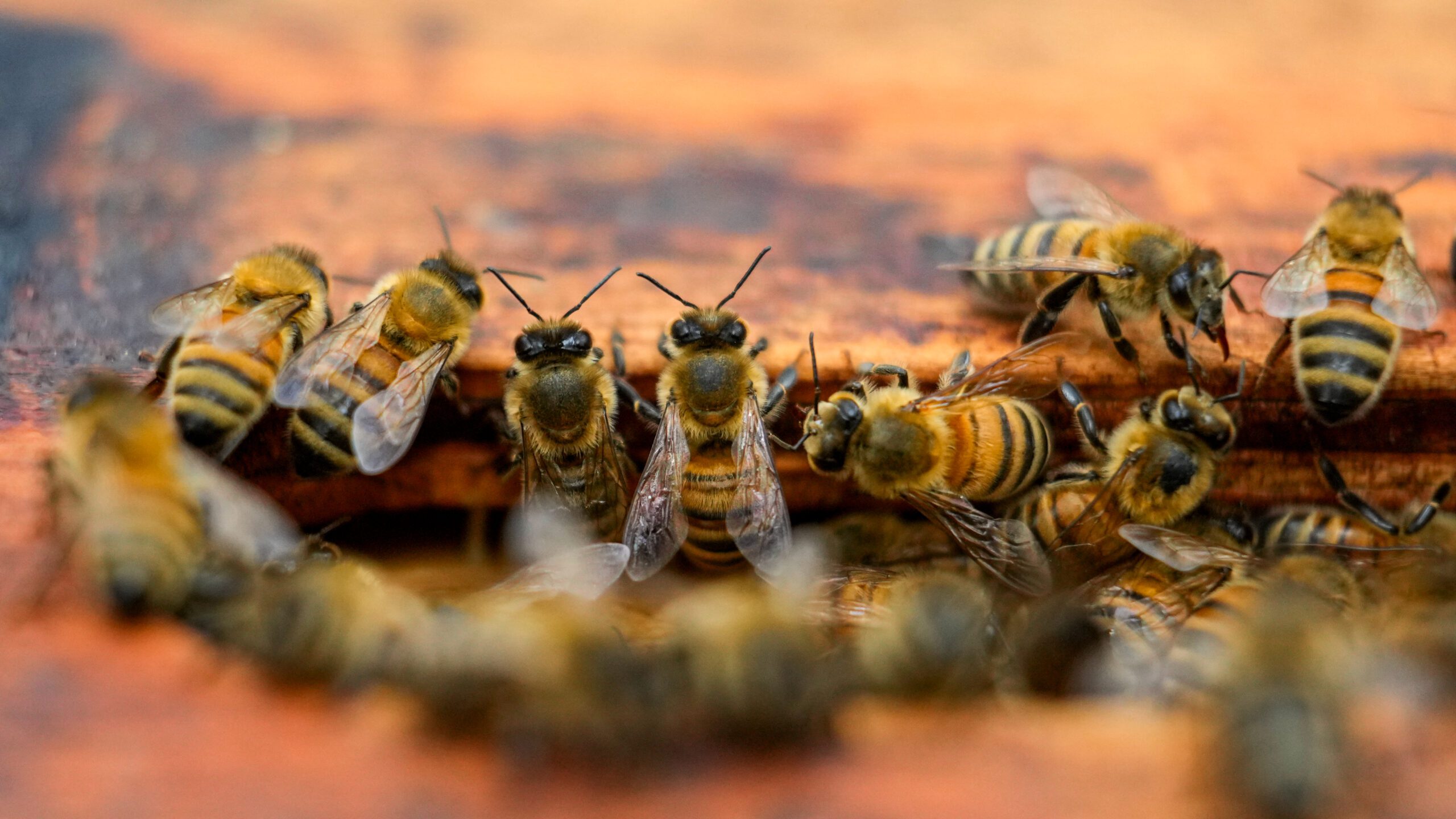Nearly half of US honeybee colonies died last year

A colony of bees is seen at at hive in the backyard of University of Maryland bee researcher Nathalie Steinhauer, Wednesday, June 21, 2023, in College Park, Md. (AP Photo / Julio Cortez)
America’s honeybee hives just staggered through the second highest death rate on record, with beekeepers losing nearly half of their managed colonies, an annual bee survey found.
But using costly and Herculean measures to create new colonies, beekeepers are somehow keeping afloat.
Thursday’s University of Maryland and Auburn University survey found that even though 48% of colonies were lost in the year that ended April 1, the number of United States honeybee colonies “remained relatively stable.”
Honeybees are crucial to the food supply, pollinating more than 100 of the crops we eat, including nuts, vegetables, berries, citrus and melons.
Scientists said a combination of parasites, pesticides, starvation and climate change keep causing large die-offs.
Last year’s 48% annual loss is up from the previous year’s loss of 39% and the 12-year average of 39.6%, but it’s not as high as 2020-2021’s 50.8% mortality rate, the survey found.
Beekeepers told the surveying scientists that 21% loss over the winter is acceptable and more than three-fifths of beekeepers surveyed said their losses were higher than that.
The overall bee colony population is relatively steady because commercial beekeepers split and restock their hives, finding or buying new queens, or even starter packs for colonies, said University of Maryland bee researcher Nathalie Steinhauer, the survey’s lead author.
It’s an expensive and time consuming process.
The prognosis is not as bad as 15 years ago because beekeepers have learned how to rebound from big losses, she said.
The parasitic mite Varroa destructor that helps transmit viruses is the chief culprit, but bad weather and queen issues were also big problems in the past year, Steinhauer said.
Pesticides also make things worse because it makes bees more vulnerable to diseases and less likely to seek food, she said.
Another problem is landscapes that have only one crop or homogenous landscapes which deprive bees of food, while pesticides and bouts of extreme weather also have caused problems.
The U.S. Department of Agriculture says 35% of the human diet comes from insect-pollinated plants and the honeybee is responsible for 80% of that pollination.
AP Video by: Julio Cortez
Produced by: Teresa de Miguel
—-
Associated Press climate and environmental coverage receives support from several private foundations. The AP is solely responsible for all content.